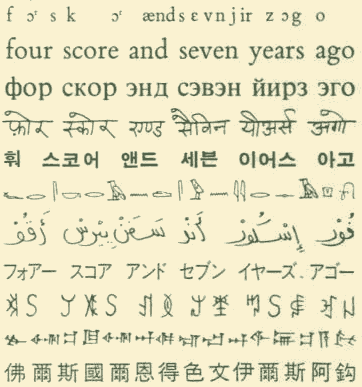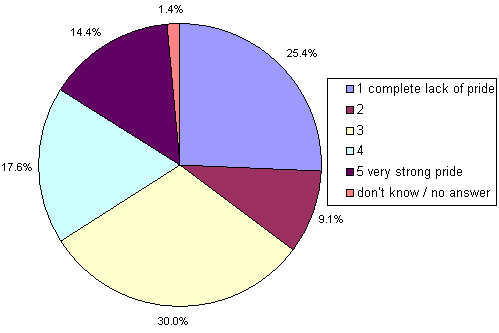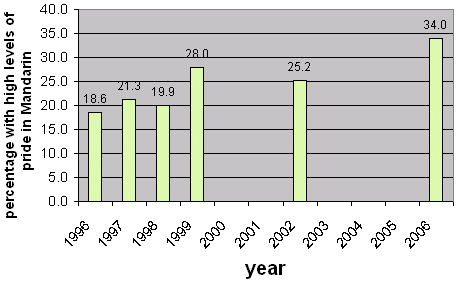The latest new release from Sino-Platonic Papers is one that I think will be of particular interest to readers of Pinyin News. It’s an extensive study of not only the attitudes of speakers of Cantonese and Mandarin toward the status of Cantonese but also their beliefs about its future, especially in Hong Kong: Language or Dialect–or Topolect? A Comparison of the Attitudes of Hong Kongers and Mainland Chinese towards the Status of Cantonese (650 KB PDF), by Julie M. Groves.
This study reports on a comparative survey of three groups of Chinese: 53 Hong Kong Cantonese speakers, 18 Mainland Chinese Cantonese speakers, and 72 Mainland Chinese Putonghua speakers. It was found that the Putonghua speakers held more ‘classic’ views, the majority seeing Cantonese as a dialect. In contrast, only just over half the Hong Kongers and two-fifths the Mainland Cantonese speakers considered it clearly a dialect, while one-third of all respondents favoured a mid-point classification. The differing perspectives held by the groups can be traced to their different political and linguistic situations, which touch issues of identity.
The author notes, “The uncertainties in classification also reflect a problem with terminology. The Chinese word usually translated dialect, fangyan (方言), does not accurately match the English word dialect.” Groves recommends the adoption of Victor Mair’s proposed English word for fangyan: topolect.
Although this focuses on the dialect vs. language debate, it covers much more than that. Those being surveyed were also asked questions such as:
- Where do you think the best Cantonese is spoken?
- Do you think Putonghua will eventually replace Cantonese as the main, everyday language of Hong Kongers?
- Do you think it is possible for someone to consider themselves to be a Hong Konger (or Hong Kong Chinese/Chinese Hong Konger) without being able to speak Cantonese?
The results of the study may also prove useful for those interested in the future of other languages of China and Taiwan, such as Taiwanese and Shanghainese.
Here are a couple of the many graphs found in the study.
HK Cant = Hong Kong Cantonese speakers
MCant = mainland Cantonese speakers
MPTH = mainland speakers of Mandarin (“Pǔtōnghuà“)
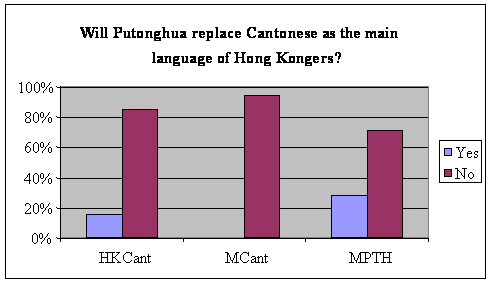
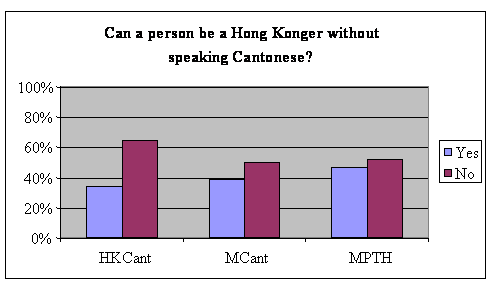

 Joel of Danwei has posted about an interesting calligraphy scroll presented to Hong Kong superstar Andy Lau.
Joel of Danwei has posted about an interesting calligraphy scroll presented to Hong Kong superstar Andy Lau. 